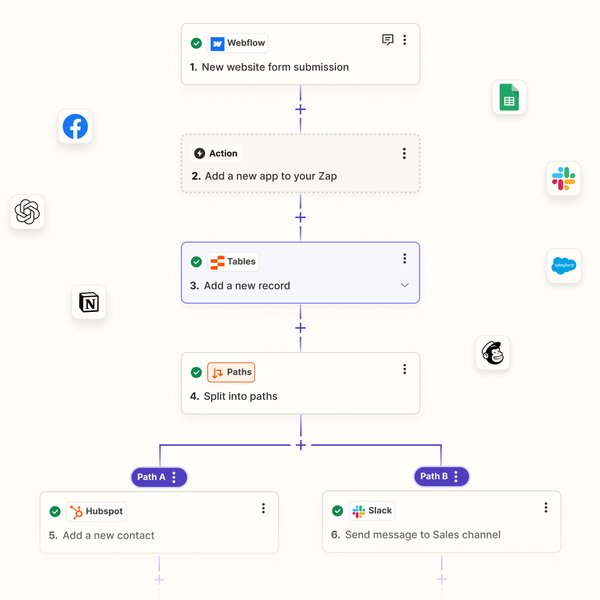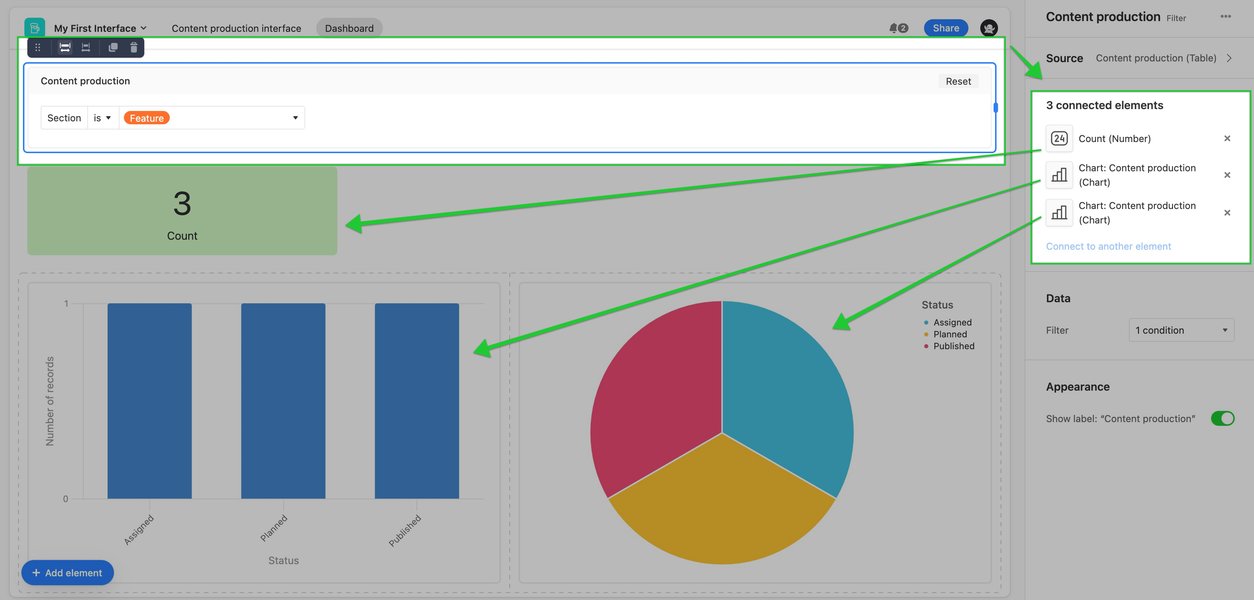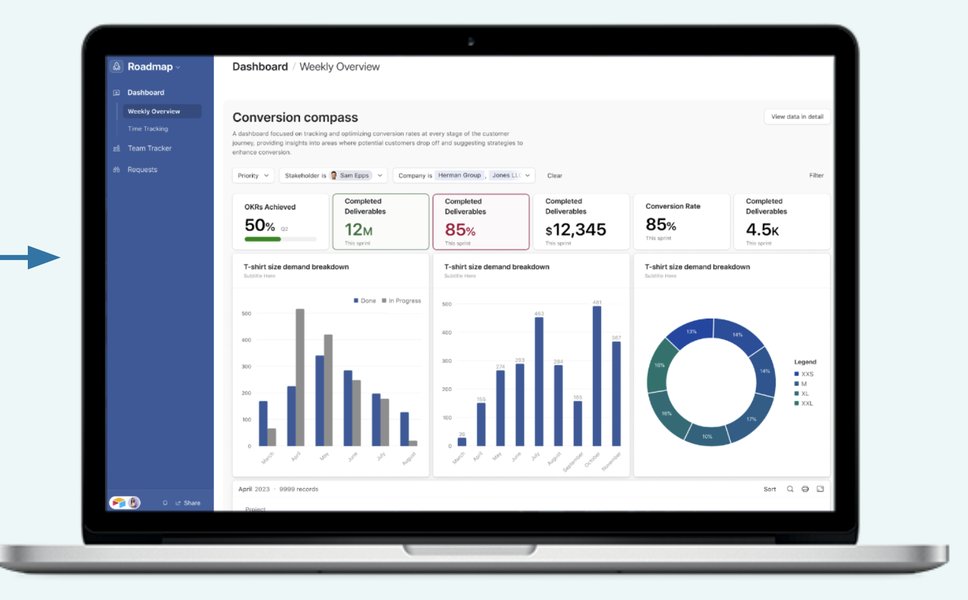
Achieving Seamless Data Synchronization Between SaaS Applications
Explore the world of two-way syncing for popular SaaS tools like Airtable.
Key Insights into Two-Way SaaS Syncing
- Two-way sync is crucial for maintaining data consistency across multiple SaaS applications, enabling real-time updates in both connected systems.
- Platforms like Whalesync and Unito specialize in providing robust, bi-directional synchronization for a variety of SaaS tools, including no-code platforms like Airtable and Notion.
- While some SaaS applications, such as Airtable, offer native two-way syncing features, dedicated integration platforms often provide more comprehensive and customizable solutions for complex workflows and multiple connections.
The Growing Need for Two-Way SaaS Synchronization
In today's digital landscape, businesses increasingly rely on a diverse stack of Software as a Service (SaaS) applications to manage various aspects of their operations, from customer relationship management (CRM) and project management to finance and marketing. While the adoption of specialized SaaS tools offers numerous benefits, including increased efficiency and access to advanced features, it also introduces the challenge of data silos. Information can become fragmented across different platforms, leading to inconsistencies, manual data entry, and hindered collaboration.
This is where the concept of data synchronization becomes critical. Initially, many businesses adopted one-way syncing, where data flows from a source application to a destination application. While this can be useful for simple data migration or reporting, it doesn't address the need for real-time updates and collaboration across platforms where data is actively managed in multiple tools. This limitation highlights the growing importance of two-way synchronization, also known as bidirectional sync.
Two-way sync ensures that data remains consistent and up-to-date across all connected applications. When a record is created or updated in one application, the changes are automatically reflected in the other connected application(s), and vice versa. This creates a unified view of information, eliminates the need for manual data transfers, and empowers teams to work with the most current data regardless of the platform they are using.
For example, a sales team might use a CRM like HubSpot to manage leads and customer interactions, while a project management team uses Airtable to track project progress and tasks. With a two-way sync between HubSpot and Airtable, updates made to a customer record in HubSpot (e.g., a change in deal stage) can automatically update a corresponding project task in Airtable, and changes made to a task in Airtable (e.g., marking a task as complete) can update the customer record in HubSpot. This seamless flow of information improves efficiency, reduces errors, and enhances collaboration between departments.
Exploring Software Tools for Two-Way Syncing
Several software tools and platforms are designed to facilitate two-way synchronization between SaaS applications. These tools vary in their capabilities, the range of applications they support, and their target audience, from individual users and small businesses to large enterprises. When considering a tool for two-way sync, it's important to evaluate factors such as ease of use, the breadth of integrations, customization options, reliability, and pricing.
Dedicated Two-Way Sync Platforms
Some platforms specialize specifically in providing robust two-way data synchronization. These tools are built to handle the complexities of bidirectional data flow, including conflict resolution and data transformation.
Whalesync: Whalesync is highlighted as a platform designed for instant, two-way syncing between no-code tools like Airtable, Webflow, Notion, and others. It aims to simplify the process of keeping data consistent across these applications without requiring extensive coding. Whalesync focuses on creating deep integrations where data across multiple apps is constantly kept in sync, offering features like precision filtering and enterprise-grade security.
Unito: Unito is another prominent platform focused on two-way synchronization, particularly for task and project management tools. It allows users to build powerful integrations to connect workflows across teams and tools. Unito emphasizes providing embedded two-way sync solutions that can boost retention and deal size for businesses looking to offer integrations to their own users.
Stacksync: Stacksync is mentioned as a tool that provides true bi-directional, real-time synchronization with sub-second updates and no-code configuration. It aims to solve the challenge of keeping data consistent across a data stack and SaaS tools.
Integration Platform as a Service (iPaaS)
Integration Platform as a Service (iPaaS) solutions are comprehensive platforms that provide tools and connectors to integrate various applications and automate workflows. While many iPaaS platforms offer one-way integrations and workflow automation, some also provide capabilities for two-way synchronization.
Zapier: Often recognized as a popular platform for workflow automation, Zapier focuses on "if-this-then-that" building blocks to create automated actions. While it excels at triggering actions based on events in one app and performing tasks in another, it is primarily a task runner that transforms data rather than a dedicated two-way syncing tool that mirrors data between systems. However, with careful configuration, Zapier can be used to create workflows that mimic aspects of two-way sync for certain use cases.

A visual representation of Zapier's workflow automation interface.
Workato: Workato is an enterprise-grade automation and integration platform that supports complex workflows and integrations, including bidirectional data sync for various applications. It is designed for businesses with more sophisticated integration needs.
Make (formerly Integromat): Similar to Zapier, Make allows users to connect apps and automate workflows using a visual builder. It offers robust capabilities for data transformation and multi-step scenarios, which can be configured to achieve two-way synchronization for supported applications.
APPSeCONNECT: APPSeCONNECT is highlighted as an enterprise integration platform that unifies ERP, CRM, and eCommerce apps. It is described as a strong iPaaS solution for mid-sized firms requiring robust connectors and real-time synchronization, demonstrating the ability to handle large volumes of transactions while maintaining sync.
Other iPaaS platforms that may offer two-way syncing capabilities include Tray.io, MuleSoft, and Dell Boomi, though their focus and strengths may vary.
Native SaaS Application Features
Some SaaS applications are increasingly offering built-in features for data synchronization, including two-way sync, with other popular tools or within their own ecosystem.
Airtable: Airtable itself offers syncing capabilities, including the ability to sync data between different bases and potentially with external sources. Airtable's sync feature allows you to bring data from multiple sources into a single synced table. While Airtable offers one-way sync inherently, the concept of two-way syncing within Airtable often involves workarounds or utilizing its API with external tools. However, Airtable has introduced features that enable two-way syncing, particularly for mirroring data between bases and allowing edits in synced tables to reflect back to the source.

An example of a connected interface within Airtable, potentially utilizing synced data.
HubSpot: HubSpot offers native data sync capabilities that allow it to connect and synchronize data with other applications, including some two-way sync functionalities, particularly with tools like marketing platforms and other CRM systems.
The availability and sophistication of native two-way sync features vary significantly between SaaS applications. While convenient for simple integrations, they may not offer the same level of customization, scalability, or error handling as dedicated integration platforms.
Key Considerations for Choosing a Two-Way Sync Tool
Selecting the right software tool for two-way syncing requires careful evaluation of your specific needs and the capabilities of different platforms. Here are some key factors to consider:
Supported Applications
Ensure that the tool supports the specific SaaS applications you need to synchronize. The breadth and depth of connectors offered by a platform are crucial. Look for direct integrations or the ability to connect via APIs.
Ease of Use
Consider the user interface and the complexity of setting up and managing sync flows. No-code or low-code platforms with visual builders can be more accessible for business users, while more technical platforms may offer greater flexibility for complex scenarios.
Data Mapping and Transformation
The ability to accurately map fields between different applications and transform data formats is essential for successful synchronization. The tool should provide flexible options for handling discrepancies in data structures.
Real-Time vs. Scheduled Sync
Determine whether you require real-time synchronization for immediate data consistency or if scheduled syncs at regular intervals are sufficient. Real-time sync is crucial for applications where instant updates are critical for workflows and decision-making.
Conflict Resolution
Understand how the tool handles data conflicts that may arise when the same record is updated simultaneously in both connected applications. The platform should have clear rules or options for conflict resolution to maintain data integrity.
Scalability and Performance
If you have a large volume of data or anticipate significant growth, ensure that the tool can scale to handle your needs without performance issues. Consider the platform's architecture and infrastructure.
Security and Compliance
Data security and compliance with relevant regulations (e.g., GDPR, HIPAA) are paramount. Verify the security measures and certifications of the platform to ensure your data is protected.
Error Handling and Monitoring
A robust tool should provide clear error reporting and monitoring capabilities to help you identify and resolve issues with your sync flows quickly.
Pricing Model
Evaluate the pricing structure of the platform, which may be based on factors such as the number of connected apps, the volume of data synced, or the number of users.
Comparing Two-Way Sync Tools
Here's a simplified comparison of some of the types of tools discussed:
| Tool Type | Primary Focus | Key Strength | Complexity | Target Audience |
|---|---|---|---|---|
| Dedicated Two-Way Sync Platforms (e.g., Whalesync, Unito, Stacksync) | Real-time, bidirectional data mirroring | Deep, reliable two-way connections for specific app categories | Moderate to High (depending on the platform and integration) | Businesses prioritizing seamless data flow between core tools |
| iPaaS Platforms (e.g., Zapier, Workato, Make, APPSeCONNECT) | Workflow automation and application integration | Broad range of connectors and automation capabilities | Moderate to High (depending on the complexity of the workflow) | Businesses needing to automate tasks and integrate multiple apps |
| Native SaaS Features (e.g., Airtable Sync, HubSpot Data Sync) | Synchronization within the application's ecosystem or with select partners | Convenience and ease of use for basic sync needs | Low to Moderate | Users needing simple sync between a limited number of apps |
Illustrative Example: Two-Way Sync with Airtable
Airtable's flexibility as a no-code database makes it a popular tool for various business processes. Implementing two-way sync with Airtable can unlock powerful use cases. For instance, syncing Airtable with a CRM allows for seamless management of customer data and related projects. Syncing with a marketing automation platform can ensure that lead information and campaign activities are consistent across both systems.
Using a dedicated two-way sync platform like Whalesync or Unito with Airtable often involves:
- Connecting your Airtable base and the other desired SaaS application to the sync platform.
- Mapping the fields between the two applications that you want to synchronize. This step is crucial to ensure that data flows correctly between corresponding fields.
- Configuring the sync rules, including the direction of the sync (two-way) and any filtering criteria to specify which records should be synced.
- Initiating the sync, which will then automatically keep the mapped data consistent in both applications.
Airtable's native sync features offer a more direct way to connect different Airtable bases or specific views. This is particularly useful for centralizing data from various departmental bases into a master base or sharing relevant information between teams. The two-way syncing within Airtable allows for updates in the synced table to be reflected in the source, creating a more collaborative data environment.

A visual of an Airtable dashboard, which can be populated with data from synced sources.
For more complex scenarios involving multiple applications or advanced data transformations, utilizing a dedicated two-way sync platform or a powerful iPaaS solution integrated with Airtable's API provides greater flexibility and control over the data flow.
The Future of SaaS Integration and Two-Way Sync
The trend towards increased SaaS adoption and the need for seamless data flow between applications is expected to continue. This will drive further innovation in the field of integration and synchronization tools. We can anticipate platforms offering even more sophisticated features, including AI-powered data mapping, intelligent conflict resolution, and deeper integrations with a wider range of specialized SaaS applications.
The focus will likely remain on providing user-friendly interfaces and low-code/no-code options to empower business users to set up and manage integrations without heavy reliance on IT resources. As businesses become more data-driven, the ability to maintain a single, consistent source of truth across their SaaS stack through reliable two-way synchronization will be increasingly crucial for making informed decisions and achieving operational efficiency.
This video demonstrates how Whalesync can be used for two-way syncing between Airtable and other tools, illustrating the process of connecting applications and mapping data.
Frequently Asked Questions About Two-Way SaaS Syncing
What is the main difference between one-way and two-way sync?
One-way sync moves data from a source application to a destination application, but changes in the destination are not sent back to the source. Two-way sync, or bidirectional sync, mirrors data between two applications, meaning updates in either application are reflected in the other, keeping data consistent in both systems.
Why is two-way sync important for businesses using multiple SaaS apps?
Two-way sync is crucial for preventing data silos, reducing manual data entry, ensuring data accuracy across different platforms, and improving collaboration between teams that use different tools. It provides a unified view of information, enabling better decision-making and operational efficiency.
Do all SaaS integration platforms offer two-way sync?
No, not all integration platforms offer true two-way sync. Some focus primarily on one-way data transfer or workflow automation based on triggers. Dedicated two-way sync platforms and some advanced iPaaS solutions are specifically designed to handle bidirectional data flow reliably.
Can I achieve two-way sync using only the native features of SaaS applications?
Some SaaS applications offer native two-way syncing with a limited number of other applications or within their own ecosystem. However, for more complex integrations involving multiple apps or advanced data transformation, dedicated integration platforms usually provide more comprehensive and flexible solutions.
What are some common challenges in implementing two-way sync?
Challenges can include mapping complex data structures between different applications, handling data conflicts when simultaneous updates occur, ensuring data security and compliance, and managing the scalability of the integration as data volume grows.
References
Last updated May 4, 2025